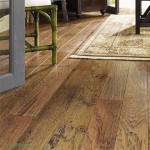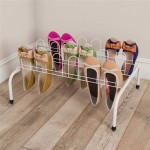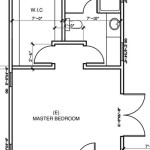How To Clean New Hardwood Floors
New hardwood floors represent a significant investment, enhancing the aesthetic appeal and value of a property. Maintaining their pristine condition requires a proactive cleaning approach that prioritizes both effectiveness and gentleness. Understanding the nuances of cleaning new hardwood floors is crucial to preserving their finish and ensuring their longevity. This article provides a comprehensive guide to cleaning new hardwood floors, covering essential considerations, recommended tools and cleaning solutions, and step-by-step instructions.
Before embarking on any cleaning regimen, it is imperative to ascertain the type of finish applied to the hardwood floors. Broadly, hardwood floors are categorized as either surface-sealed or penetrating oil-finished. Surface-sealed floors, typically coated with polyurethane, are the more common type. These floors offer a durable and protective barrier against moisture and stains. Penetrating oil-finished floors, on the other hand, possess a more natural appearance, allowing the wood's texture to be prominently displayed. However, they require more frequent maintenance and are more susceptible to damage from spills and moisture.
Determining the finish type is often possible by observing the floor's surface. Surface-sealed floors typically exhibit a glossy or semi-glossy sheen, and water will bead on the surface. Penetrating oil-finished floors tend to have a matte appearance, and water may absorb into the wood. Consulting with the installer or referring to the floor's documentation is the most reliable method for identifying the finish type.
Essential Considerations Before Cleaning
Several crucial considerations must be addressed before commencing the cleaning process. These considerations directly impact the effectiveness of the cleaning and the long-term preservation of the hardwood floors.
Firstly, the manufacturer’s guidelines must be consulted. The manufacturer’s recommendations provide specific instructions regarding suitable cleaning products and techniques. Deviating from these recommendations could void the warranty or, more seriously, damage the floor's finish.
Secondly, implementing a preventative maintenance strategy is critical. Placing mats at entryways minimizes the introduction of dirt, grit, and moisture which can abrade the floor’s finish over time. Regularly sweeping or vacuuming removes loose debris before it can become embedded in the surface. Implementing a "no shoes" policy or using soft-soled shoes indoors also significantly reduces wear and tear. These proactive measures can substantially reduce the frequency and intensity of required cleaning.
Thirdly, avoid harsh cleaning agents. Abrasive cleaners, ammonia-based products, and bleach can damage the finish and dull the appearance of hardwood floors. These chemicals can strip away the protective coating, leaving the wood vulnerable to scratches, stains, and moisture damage. Opting for pH-neutral cleaning solutions specifically designed for hardwood floors is vital.
Fourthly, testing cleaning solutions on an inconspicuous area is advisable. Before applying any cleaning solution to the entire floor, test it on a small, hidden area, such as under a piece of furniture or in a closet. This allows one to observe any adverse reactions, such as discoloration or finish damage, before widespread application.
Recommended Tools and Cleaning Solutions
Selecting the appropriate tools and cleaning solutions is crucial for achieving effective and safe cleaning. The following are recommended for cleaning new hardwood floors:
For tools, a soft-bristled broom is essential for sweeping up loose dirt and debris. Avoid using brooms with stiff bristles, as these can scratch the floor's surface. A vacuum cleaner with a hardwood floor attachment is a good alternative for removing dust and debris, particularly in corners and along baseboards. Ensure the vacuum cleaner's brush roll is disengaged to avoid scratching the floor. A microfiber mop is ideal for wet cleaning. Microfiber mops are gentle on the floor's surface and effectively trap dirt and moisture. A bucket should be used for holding the cleaning solution. Ensure the bucket is clean and free of any abrasive materials.
For cleaning solutions, pH-neutral hardwood floor cleaner is the preferred choice. These cleaners are specifically formulated to clean hardwood floors without damaging the finish. Alternatively, a homemade cleaning solution of water and white vinegar can be used. Mix one-quarter cup of white vinegar with one gallon of water. This solution is effective for removing dirt and grime without leaving a residue. Avoid using excessive amounts of water, as this can seep into the seams between the boards and cause warping or damage. A spray bottle is useful for applying cleaning solutions to specific areas. Ensure the spray bottle is clean and free of any residue from other cleaning products.
Step-by-Step Cleaning Instructions
Following a systematic cleaning process ensures thorough cleaning and minimizes the risk of damage to the hardwood floors.
Step one involves preparing the area. Remove all furniture and rugs from the area to be cleaned. This allows for unobstructed access to the entire floor surface. Sweep or vacuum the floor thoroughly to remove loose dirt, dust, and debris. Pay particular attention to corners, edges, and areas under furniture. A clean floor surface is essential for effective wet cleaning.
Step two involves preparing the cleaning solution. Follow the manufacturer's instructions for diluting the hardwood floor cleaner. If using a homemade solution, mix one-quarter cup of white vinegar with one gallon of water. Dampen the microfiber mop with the cleaning solution. Ensure the mop is not overly saturated, as excessive water can damage the floor. Wring out the mop thoroughly to remove excess liquid.
Step three involves cleaning the floor. Work in small sections, overlapping each section slightly to ensure thorough cleaning. Apply gentle pressure to the mop, avoiding excessive scrubbing. For stubborn stains or spills, spray the affected area with the cleaning solution and let it sit for a few minutes before wiping it clean. Regularly rinse the mop with clean water to remove dirt and grime. Wring out the mop thoroughly after each rinse to prevent water damage.
Step four involves drying the floor. After cleaning, allow the floor to air dry completely. This may take several minutes, depending on the humidity and ventilation in the room. Using a clean, dry microfiber cloth to wipe the floor can speed up the drying process. Ensure the floor is completely dry before replacing furniture and rugs.
Step five involves maintenance and prevention. Once the floor is clean and dry, consider applying a hardwood floor polish or restorer to protect the finish and enhance its shine. Follow the manufacturer's instructions for application. Continue to implement preventative maintenance strategies, such as using mats at entryways and sweeping or vacuuming regularly, to minimize the need for frequent cleaning. Promptly clean up spills and stains to prevent them from setting and causing permanent damage.
Proper stain removal is crucial for maintaining the appearance of new hardwood floors. Different types of stains require different approaches.
For water stains, immediate action is key. Blot the stain with a clean, dry cloth as quickly as possible. If the stain persists, try using a hairdryer on a low setting to dry the affected area. Be careful not to overheat the wood. For oil-based stains, such as grease or cooking oil, sprinkle baking soda or cornstarch on the stain to absorb the oil. Let it sit for several hours, then vacuum up the powder. For tough stains, mix a paste of baking soda and water and apply it to the stain. Let it dry, then wipe it clean with a damp cloth.
For pet stains, clean the area immediately with a pet-specific stain and odor remover. Follow the manufacturer's instructions carefully. Avoid using ammonia-based cleaners, as these can exacerbate the problem. For ink stains, try blotting the stain with rubbing alcohol. Test the alcohol on an inconspicuous area first to ensure it does not damage the finish. For wine stains, blot the stain with a clean, dry cloth. Then, sprinkle salt on the stain to absorb the wine. Let it sit for several hours, then vacuum up the salt.
Regular maintenance is essential for preserving the beauty and longevity of new hardwood floors. Dust mopping or vacuuming should be performed at least once a week, or more frequently in high-traffic areas. This removes loose dirt and debris before it can scratch the floor's surface. Damp mopping should be performed as needed, typically every one to two weeks, depending on the amount of traffic and soiling. Always use a pH-neutral hardwood floor cleaner and avoid over-wetting the floor.
Protecting hardwood floors from scratches and dents is vital. Use felt pads under furniture legs to prevent scratches when moving furniture. Avoid wearing shoes with high heels or cleats indoors, as these can dent the floor. Place area rugs in high-traffic areas to protect the floor from wear and tear. Consider using a floor protector under office chairs to prevent scratches from the chair's wheels. Avoid dragging heavy objects across the floor. Instead, lift and carry them. Regularly inspect the floor for any signs of damage, such as scratches, dents, or water stains. Address any issues promptly to prevent them from worsening.
Seasonal changes can impact hardwood floors. During the winter months, when the air is dry, hardwood floors can shrink, creating gaps between the boards. Use a humidifier to maintain a consistent humidity level in the home. During the summer months, when the air is humid, hardwood floors can expand. Ensure proper ventilation to prevent moisture buildup. Avoid placing potted plants directly on the floor, as moisture from the pots can damage the wood. Regularly check for leaks from plumbing fixtures and appliances. Address any leaks promptly to prevent water damage.

How To Clean Hardwood Floors Reviews By Wirecutter

The 5 Best Ways To Clean Hardwood Floors Chet S Cleaning

How To Clean Hardwood Floors Without Damaging Them

How To Clean Wood Floors Carefully And Deeply O Cedar

How To Clean Hardwood Floors Like A Pro

How To Clean And Shine Hardwood Floors Fast Easy Tips

How To Clean Your Hardwood Floors

How To Clean Hardwood Floors Eco Actions

How To Clean Hardwood Floors Reviews By Wirecutter

How To Clean Hardwood Floors And Ensure Their Durability







